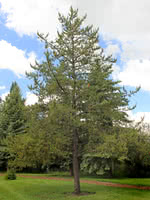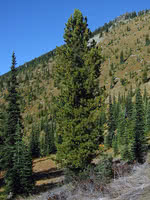Mon-Fri 9am - 5pm Mountain time
Jack Pine vs Whitebark Pine
Pinus banksiana
Pinus albicaulis
SOLD OUT
Jack Pine is a cold tolerant native species that can survive on dry, sandy or gravelly sites.
Similar to Scots Pine, though somewhat larger, Jack Pine is known for its yellow-green needles, spreading crown, and irregular form. If you have a tough site to plant, this tree may be right for you.
Endangered
Whitebark Pine is a beautiful coniferous tree that produces tasty, edible nuts. You'll love this trees' rustic and natural appeal, making it an excellent specimen tree.
It is an endangered species from the Rocky Mountains, this slow grower seldom produces cones until it is 50 years old but regularly survives to be 500 or more years of age. Our staff think it is among the most attractive pines we have grown.
Whitebark Pine is well-known for maintaining snow drifts, providing food and shelter to many species of wildlife, and bringing stability to steep slopes. This high elevation and adaptable tree is deer resistant and can withstand a variety of soils and moisture levels.
Jack Pine Quick Facts
Whitebark Pine Quick Facts
In row spacing: 3 - 4 m (10 - 12 ft)

